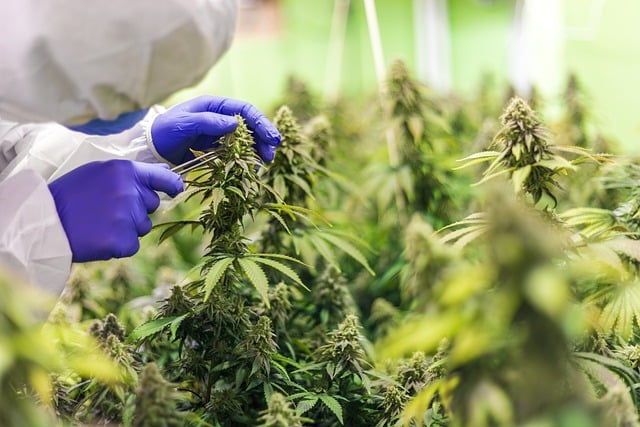Hawaiian Haze THC-a Hemp Flower: A Guide to Its Unique Terpenes and Benefits
Hawaiian Haze THC-a Hemp Flower: A Guide to Its Unique Terpenes and Benefits
The world of hemp flowers offers a diverse array of strains, each with its own unique profile and benefits. Among these, Hawaiian Haze THC-a hemp flower stands out for its distinctive characteristics and potential advantages. This article indacloud explores the unique terpenes found in Hawaiian Haze and the benefits they may offer.
Understanding Hawaiian Haze THC-a Hemp Flower
Hawaiian Haze is a sativa-dominant strain known for its tropical aroma and uplifting effects. It is a hybrid of Hawaiian and Haze genetics, which contributes to its unique profile. The THC-a variant of this strain is particularly interesting, as it contains tetrahydrocannabinolic acid (THC-a), a non-psychoactive precursor to THC.
What is THC-a?
THC-a is the acidic form of THC, found in raw cannabis plants. Unlike THC, THC-a does not produce psychoactive effects when consumed. It must be decarboxylated, or heated, to convert into THC. This makes THC-a hemp flowers appealing for those seeking the benefits of cannabis without the high.
The Unique Terpenes of Hawaiian Haze
Terpenes are aromatic compounds found in many plants, including hemp. They contribute to the scent, flavor, and potential effects of a strain. Hawaiian Haze is rich in several terpenes that enhance its profile.
Myrcene
Myrcene is one of the most prevalent terpenes in cannabis. It is known for its earthy and musky aroma, often compared to cloves. Myrcene is believed to have relaxing effects, which can complement the uplifting nature of Hawaiian Haze.
Pinene
Pinene, as the name suggests, has a pine-like aroma. It is thought to promote alertness and memory retention. This terpene may help balance the relaxing effects of myrcene, providing a more focused experience.
Limonene
Limonene is characterized by its citrusy scent. It is associated with mood enhancement and stress relief. The presence of limonene in Hawaiian Haze contributes to its refreshing aroma and potential mood-boosting effects.
Caryophyllene
Caryophyllene has a spicy, peppery aroma. It is unique among terpenes for its ability to interact with cannabinoid receptors in the body. This interaction may offer anti-inflammatory benefits, adding another layer to the potential advantages of Hawaiian Haze.
Potential Benefits of Hawaiian Haze THC-a Hemp Flower
The combination of terpenes and THC-a in Hawaiian Haze may offer several benefits. While research is ongoing, anecdotal evidence and preliminary studies suggest potential advantages.
- Stress Relief: The presence of limonene and myrcene may contribute to stress reduction and relaxation.
- Mood Enhancement: Limonene’s mood-boosting properties can provide an uplifting experience.
- Focus and Clarity: Pinene may help improve focus and mental clarity, making Hawaiian Haze suitable for daytime use.
- Anti-inflammatory Effects: Caryophyllene’s interaction with cannabinoid receptors may offer anti-inflammatory benefits.
Case Studies and Research
While specific studies on Hawaiian Haze are limited, research on its individual components provides insight into its potential benefits.
Terpene Research
A study published in the British Journal of Pharmacology highlights the therapeutic potential of terpenes. It suggests that terpenes like myrcene and limonene may have synergistic effects when combined with cannabinoids, enhancing their overall impact.
THC-a Research
Research on THC-a is still in its early stages. However, a study in the Journal of Natural Products indicates that THC-a may have anti-inflammatory properties, supporting its potential use for conditions like arthritis.
How to Use Hawaiian Haze THC-a Hemp Flower
Hawaiian Haze can be enjoyed in various ways, depending on personal preference and desired effects.
- Smoking: Traditional smoking methods allow for quick onset of effects.
- Vaporizing: Vaporizing preserves terpenes and offers a smoother experience.
- Edibles: Infusing Hawaiian Haze into oils or butters can be used in cooking, though decarboxylation is necessary to activate THC.
Conclusion
Hawaiian Haze THC-a hemp flower offers a unique combination of terpenes and non-psychoactive THC-a, making it an appealing choice for those seeking potential benefits without the high. Its rich terpene profile contributes to its distinctive aroma and potential effects, including stress relief, mood enhancement, and anti-inflammatory properties. While research is ongoing, the existing studies and anecdotal evidence suggest that Hawaiian Haze may be a valuable addition to the world of hemp flowers.

